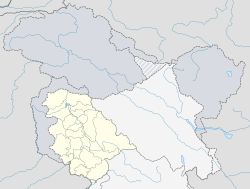*حضرت عبد اللہ بن عباس رضی اللہ عنہ نے نبی کریم صلی اللہ علیہ وسلم سے روایت کی ہے کہ آپ نے فرمایاکہ*
*مَا الْمَیِّتُ فِي الْقَبْرِ إِلَّا کَالْغَرِیقِ الْمُتَغَوِّثِ، یَنْتَظِرُ دَعْوَۃً تَلْحَقُہُ مِنْ أَبٍ أَوْ أُمٍّ أَوْ أَخٍ أَوْ صَدِیقٍ، فَإِذَا لَحِقَتْہُ کَانَتْ أَحَبَّ إِلَیْہِ مِنَ الدُّنْیَا وَمَا فِیہَا، وَإِنَّ اللہَ عَزَّ وَجَلَّ لَیُدْخِلُ عَلَی أَہْلِ الْقُبُورِ مِنْ دُعَائِ أَہْلِ الْأَرْضِ أَمْثَالَ الْجِبَالِ، وَإِنَّ ہَدِیَّۃَ الْأَحْیَاء ِ إِلَی الْأَمْوَاتِ الاسْتِغْفَارُ لَہُمْ۔*
ترجمہ :میت توقبر میں بس ایسی ہوتی ہے جیسے
کوئی غرق ہونے والا فریادی ہوتا ہے ، جو اپنے ماں ، باپ ، بھائی یا دوست کی جانب سے ملنے والی دعا کے انتظار میں ہوتی ہے ، جب اسے ان کی جانب سے دعا پہنچتی ہے تو وہ اس کے نزدیک دنیا و ما فیھا سے زیادہ محبوب ہوتی ہے اور بلاشبہ اللہ تعالی زمین والوں کی دعا سے قبر والوں پر پہاڑوں برابر رحمتیں نازل کرتے ہیں اور بے شک زندوں کا تحفہ مردوں کے لیے ان کے حق میں استغفار ہے۔
*شعب الإیمان :۷۵۲۷،*
*مسند الفردوس :۶۳۲۳،*
*مشکاۃ المصابیح:۲۳۷۸،*
*کنز العمال:۴۲۹۷۱*
*مَا الْمَیِّتُ فِي الْقَبْرِ إِلَّا کَالْغَرِیقِ الْمُتَغَوِّثِ، یَنْتَظِرُ دَعْوَۃً تَلْحَقُہُ مِنْ أَبٍ أَوْ أُمٍّ أَوْ أَخٍ أَوْ صَدِیقٍ، فَإِذَا لَحِقَتْہُ کَانَتْ أَحَبَّ إِلَیْہِ مِنَ الدُّنْیَا وَمَا فِیہَا، وَإِنَّ اللہَ عَزَّ وَجَلَّ لَیُدْخِلُ عَلَی أَہْلِ الْقُبُورِ مِنْ دُعَائِ أَہْلِ الْأَرْضِ أَمْثَالَ الْجِبَالِ، وَإِنَّ ہَدِیَّۃَ الْأَحْیَاء ِ إِلَی الْأَمْوَاتِ الاسْتِغْفَارُ لَہُمْ۔*
ترجمہ :میت توقبر میں بس ایسی ہوتی ہے جیسے
کوئی غرق ہونے والا فریادی ہوتا ہے ، جو اپنے ماں ، باپ ، بھائی یا دوست کی جانب سے ملنے والی دعا کے انتظار میں ہوتی ہے ، جب اسے ان کی جانب سے دعا پہنچتی ہے تو وہ اس کے نزدیک دنیا و ما فیھا سے زیادہ محبوب ہوتی ہے اور بلاشبہ اللہ تعالی زمین والوں کی دعا سے قبر والوں پر پہاڑوں برابر رحمتیں نازل کرتے ہیں اور بے شک زندوں کا تحفہ مردوں کے لیے ان کے حق میں استغفار ہے۔
*شعب الإیمان :۷۵۲۷،*
*مسند الفردوس :۶۳۲۳،*
*مشکاۃ المصابیح:۲۳۷۸،*
*کنز العمال:۴۲۹۷۱*














